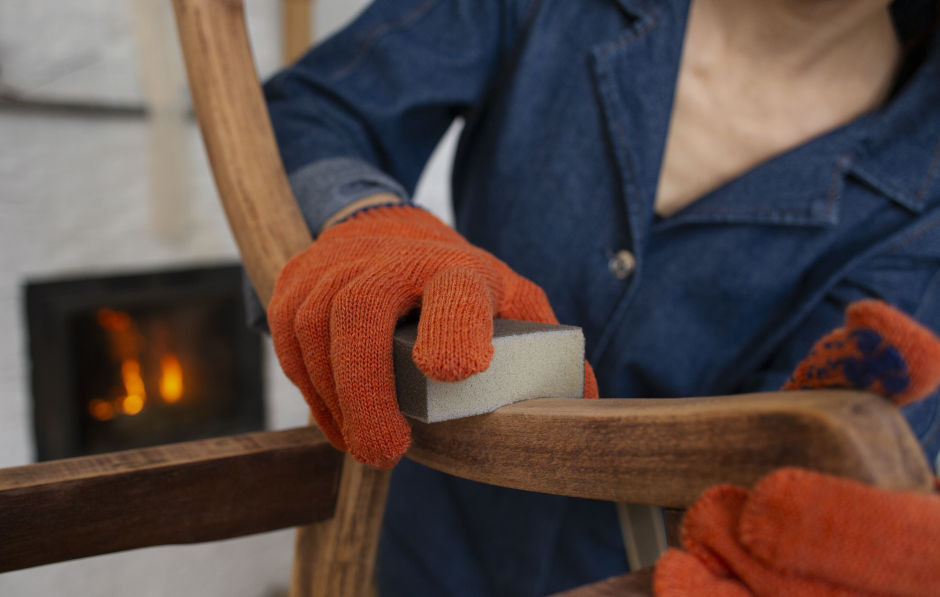
Our guide will help collectors keep their furniture clean and advises when professional restoration should be undertaken.
Patina
There is much debate surrounding patina – basically the natural accumulation of dirt, polish and wax over several years – but the general consensus is to leave it alone. Collectors and experts alike will pay a premium for pieces with authentic patina as it is a reliable indicator of age, and to remove it will often reduce the value of your period furniture. Learn everything you need to know about patina before deciding how to tackle it, but our advice would always be to leave it and just give the piece a general clean.
How to clean antique furniture
The first step in deciding whether your piece of antique furniture needs restoration is to assess it thoroughly and this can be done while giving it a clean. The easiest and gentlest way to do this is to apply a solution of soap in water with a lint-free cloth. Start in an inconspicuous spot, but do not rub the wood too hard and use the least amount of water you can. Leave the solution to work for a few minutes before wiping off, checking that the finish has not been adversely affected, and dry well. If all is well, continue until the entire piece has been cleaned, but if you find the finish has been damaged or has been revealed to be extremely worn ,it may be time to call in the experts. Once clean, your furniture is ready to be waxed.
How to wax antique furniture
Most experts agree there is no substitute for authentic beeswax polish so avoid modern, aerosol products that claim to have a wax content as this is likely to be a synthetic beeswax substitute which will harm the finish of the piece over time. Beeswax polish should be applied in a thin layer and left for 20-30 minutes before being buffed with an open-weave cotton cloth.
In an ideal world, a clean and a re-wax would have your antique furniture looking perfect but sadly it may have succumbed to the (inevitable?) ravages of times such as woodworm, cracks and water marks, and further action will be necessary.
How to treat woodworm in antique furniture
If your furniture has the telltale holes left by woodworm, it doesn’t mean the woodworm are still alive and active. If they are, however, and providing the structural integrity of the piece has not been compromised, an application of a commercially available woodworm destroying liquid squirted into the holes will see them off.
How to remove water stains from antique wood furniture
Water stains on wood will vary in colour from white to almost black depending on the cause. White marks are caused by hot or cold items sitting directly on the wood, such as hot plates and cold drinking glasses. Condensation or steam penetrates the finish and creates white marks. Using a non-steam iron on the lowest setting and a towel over the water mark, run the iron gently but firmly over the stain, checking as you go to see if the mark is lifting. Alternatively, petroleum jelly is effective as its oil content will penetrate the finish, replacing the stain. Apply with a lint-free cloth, leave overnight and wipe away with a fresh clean cloth the next day. If the first application doesn’t shift the mark, it can be repeated the next day.
How to repair cracks in antique furniture
Over time, wooden furniture that has been moved from room to room and house to house, and that has been exposed to a range of temperatures, may develop cracks due to shrinkage of the wood. Wax filler sticks are available in a range of colours so choose one that matches as closely as possible to the furniture, and take the time to build up layers of wax gradually in the cracks. Once you are happy the crack has been filled, simply buff and polish as usual.
How to restore antique wood furniture
The best way to restore antique wood furniture is to leave it to the experts, particularly when it has financial value! There are lots of how-to guides on the internet but quite simply, amateur restoration ruins antiques – professionals know the difference between restoration and conservation and when to do each, and have spent years training, often starting out as apprentices, to gain their knowledge and expertise.
Period furniture at Hemswell Antique Centres
At Hemswell Antique Centres, we are home to hundreds of dealers, many of whom are BADA accredited (British Antique Dealers’ Association) and members of LAPADA (the Association of Art and Antiques Dealers). Our four buildings house a wide range of period furniture from across the ages and, when they are onsite, our dealers are happy to recommend trusted and skilled craftsmen who can advise you on restoration. So why not come along for a day out at Hemswell, browse our wares and treat yourself to refreshments in one of our restaurants or tea rooms?